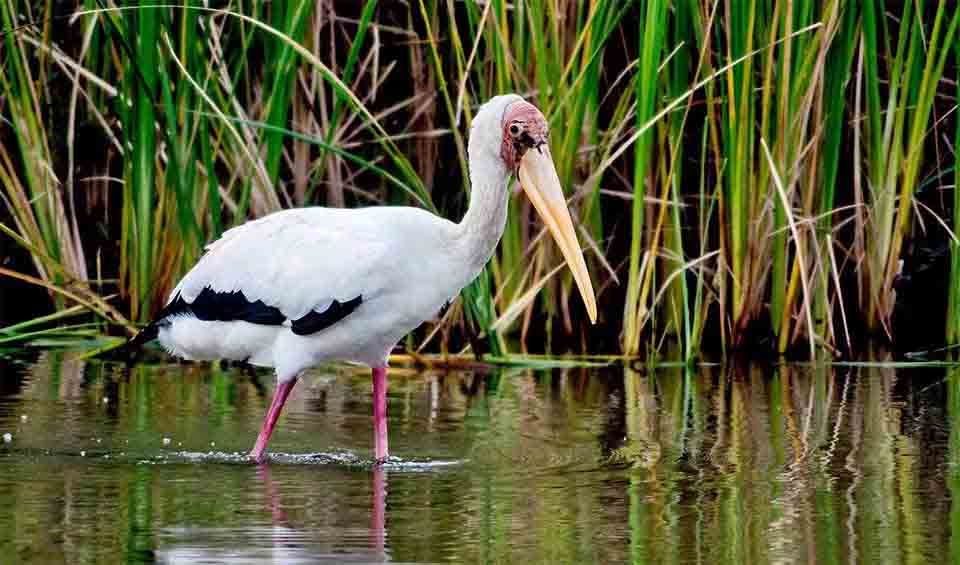Mycteria – Tropical storks & allies
Large tropical storks with one American teammate
A group of large wading birds known as storks, characterized by their long legs and distinctive beak shape, from which the genus takes its name—’muktēr’ being Greek for snout, coupled with the Latin ‘-ius,’ indicating resemblance. These features are evolutionary adaptations that enable these birds to forage in aquatic environments.
Within the genus, species vary slightly in size and coloration. The wood stork (Mycteria americana) is somewhat smaller and is recognized by its white plumage. It contrasts with a nearly bare, dark head and neck that appear wrinkly, reminiscent of a wise old sage. Its legs are long and black, serving as sturdy pillars as it wades through wetlands in search of food.
The other three species within the genus— including the painted stork (Mycteria leucocephala), the Milky stork (Mycteria cinerea), and the Yellow-billed stork (Mycteria ibis)—tend to be larger with reddish legs and a striking patch of colored skin on their faces, which adds to their charismatic presence. These species are often adorned with vibrant hues ranging from soft pinks to intense yellows, contributing to their allure and making them a favorite among birdwatchers.
The geographical distribution of the Mycteria species is diverse, spanning various continents. They are primarily sedentary, meaning they do not undertake long migratory journeys like some other bird species, although they may move locally in response to water levels and food availability.
Storks in this genus have a diet that is heavily reliant on fish, which they catch with remarkable precision using their long, pointed beaks. Their foraging technique often involves slowly wading through shallow waters, feeling for fish with their sensitive bills.
Vocalization is not a prominent feature of the Mycteria storks. Unlike many birds that communicate through songs or calls, storks tend to be relatively quiet, communicating through body language and bill-clattering displays, particularly during the breeding season.
Species in this genus
Wood stork
The “giant of the swamp”
Milky stork
The creamy colored stork in need of conservation
Painted stork
While they may look graceful in flight, they are relatively slow flyers compared to many other birds




